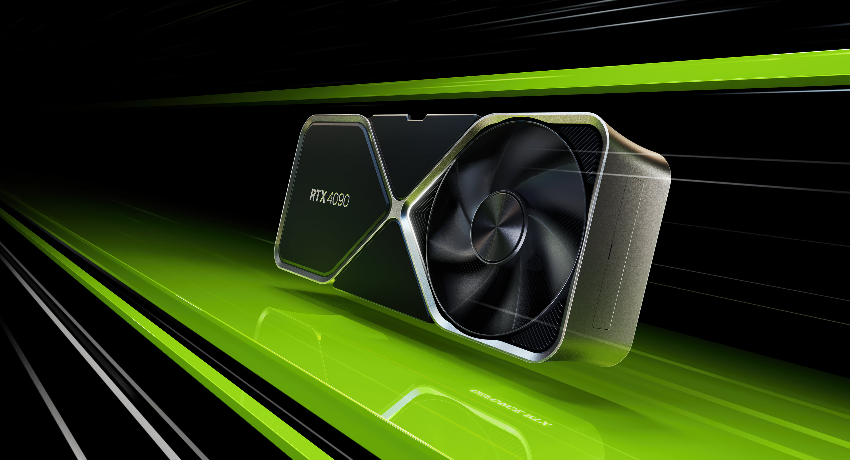Nvidia is a leader in the rapidly developing field of graphics processing, consistently pushing the envelope of what is aesthetically feasible. The newest models in Nvidia’s GPU (Graphics Processing Unit) series are the epitome of pixel perfection; they are a deft fusion of technological innovation and artistic creativity. The technical details of Nvidia’s state-of-the-art GPUs are thoroughly examined in this piece, along with the effects of pixel perfection on gaming, content creation, and other visual fields.
The GPU Architecture of Nvidia is the Brains Behind the Innovation
Ampere Structure:
The Ampere architecture is the brains behind the most recent GPUs from Nvidia. Ampere, which was introduced as the Turing architecture’s replacement, offers notable gains in rendering capabilities, efficiency, and performance. AI-based features, improved overall graphics speed, and expedited ray tracing are the main goals of the architecture’s design.
Ray Tracing Mastery:
With the introduction of Nvidia’s most recent GPUs, ray tracing—once thought to be a pipe dream—has come true. Ray tracing produces remarkably lifelike lighting, shadows, and reflections by simulating the interaction of light with virtual objects. With the help of this technology, which is driven by specialized GPU RT (Ray Tracing) cores, virtual worlds can now be created and played with an unprecedented level of visual quality.
The Acceleration of AI using Tensor Cores:
GPUs from Nvidia are capable of more than just producing pixels; they can also handle activities related to artificial intelligence (AI). AI workloads are the focus of Tensor Cores, which were first introduced with the Volta architecture and further improved with Ampere. This makes features possible, such as DLSS (Deep Learning Super Sampling), which uses artificial intelligence (AI) to upgrade low-resolution photos while maintaining image quality.
The Effect of Gaming Nirvana on Visuals
Realistic Immersion:
An era of unparalleled realism in gaming has resulted from the pursuit of pixel precision. Gamers may enjoy realistic sceneries, intricate textures, and dramatic lighting effects with Nvidia GPUs. Specifically, ray tracing turns virtual environments into breathtaking landscapes that enhance immersion with each reflection and shadow.
DLSS 2.0: Improving Output and Caliber:
For players looking for the ideal mix of performance and image quality, DLSS (Deep Learning Super Sampling) 2.0 is revolutionary. With the help of Nvidia’s Tensor Cores, an AI-powered technique upsayes low-resolution photos to give them the visual clarity of higher resolutions without incurring the same computing costs. This leads to more fluid gameplay and stunning graphics, even in games with a lot of resources.
Elevated Rates of Refresh and Ray Tracing:
Nvidia’s graphics processing units (GPUs) are designed with gaming fluidity and visual fidelity in mind. Gamers may experience stutter-free and tear-free gameplay thanks to support for high refresh rate monitors and technologies like Nvidia G-Sync. Real-time ray tracing in conjunction with high refresh rates guarantees that players may enjoy fluid motion and breathtaking visuals at the same time.
Renaissance of Content Creation: Redefining Digital Artistry
Editing and Rendering 4K Videos:
Dedicated to more than just gaming, Nvidia’s GPUs are also powerful instruments for content makers. Video editing requires a significant amount of processing power, particularly at resolutions like 4K. When combined with CUDA cores, Nvidia GPUs’ parallel processing powers greatly speed up video editing workflows, cutting down on rendering times and enabling creators to realize their ideas at a pace that has never been seen before.
AI-Driven Artistic Instruments:
AI-powered technologies are frequently used by content creators for tasks like picture processing, style transfer, and even art generation. With their Tensor Cores and AI acceleration, Nvidia’s GPUs speed up these procedures and let artists explore new frontiers in digital art. The incorporation of AI into creative workflows, whether it is for the purpose of applying artistic filters or automating intricate editing tasks, is a testament to the adaptability of these GPUs.
Ray Tracing in Real Time for Visual Effects:
The GPUs made by Nvidia are dynamic engines for visual effects that can be seen in real time, not merely instruments for rendering static images. With real-time ray tracing, content creators can view intricate scenes, replicate realistic lighting, and fine-tune their work with an accuracy previously only possible with offline rendering. The ability to work in real-time speeds up the creative process and gives artists greater freedom to explore and iterate.
The Next Big Thing in Pixel Quality: Constant Innovations
AI-Powered Improvements in Rendering:
Nvidia is still investigating the union of AI and graphics rendering. We should anticipate more developments in AI-driven rendering methods as technology progresses. This includes new ways to use machine learning to increase graphical realism and efficiency in addition to enhanced upscaling techniques.
Technological Developments in Ray Tracing:
Even though it has already changed a lot, ray tracing is still developing. New developments in ray tracing methods could improve the quality of reflections, shadows, and overall illumination in later versions of Nvidia’s GPUs. Developers will have the means to produce progressively more aesthetically spectacular and engrossing virtual worlds as hardware capabilities advance.
Quantum computing integration:
A new era of processing capacity may be ushered in by the integration of quantum computing, to look even further forward. Even while quantum computing is still in its early stages, it has the exciting potential to transform intricate simulations and calculations, including those involved in graphics rendering. With its dedication to innovation, Nvidia might be a key player in the convergence of graphics processing and quantum computing.
In summary:
Nvidia’s most recent GPUs enable pixel perfection, which is a harmonious fusion of creative vision and technological advancement. With their ability to produce immersive realism in gaming visuals and revolutionize content creation procedures, these GPUs have completely changed the scope of what is possible in the digital world. Nvidia’s dedication to expanding graphics processing capabilities guarantees that the quest for pixel perfection will continue as technology develops, captivating the interest of gamers, content creators, and tech enthusiasts alike. The future where virtual experiences seamlessly rival and, in many cases, transcend the beauty of the physical world is made possible by the art and science of Nvidia’s GPUs.
